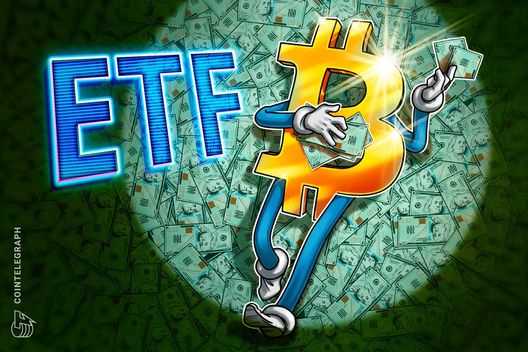In a recent report, Wall Street bank JPMorgan highlighted a significant evolution within the cryptocurrency mining sector during the second quarter and summer of 2025, particularly for Bitcoin (BTC) miners. This period was characterized by record cash operating profits and a strategic pivot towards high-performance computing (HPC) technologies. One standout example is Cipher Mining’s (CIFR) substantial 244 megawatt (MW) colocation agreement with Fluidstack, alongside IREN’s (IREN) impressive expansion to over 23,000 GPUs, illustrating a broader shift in the mining landscape.
According to JPMorgan’s analysts, despite an increase in hashrates, miners experienced a rise in gross profits quarter-over-quarter. This growth was primarily driven by higher Bitcoin prices and more efficient mining operations. Both IREN and Cipher emerged as leaders in power efficiency, boasting competitive costs of around $29,000 and $31,200 per Bitcoin mined, while Marathon Digital Holdings (MARA) faced significantly higher production costs at approximately $56,200.
The report further indicates that overall production expenses saw only a modest increase amid intensifying competition and expanded investments in HPC. On a fully loaded basis which accounts for power and operational costs, IREN and CleanSpark (CLSK) maintained an edge, with costs near $54,000 and $60,000 respectively, compared to Riot Blockchain’s (RIOT) elevated $81,000.
JPMorgan also reported a surge in fundraising activities among miners, who collectively raised around $590 million in new equity—substantially more than in the previous quarter, with a significant portion dedicated to HPC initiatives. IREN played a notable role in this trend, securing $263 million to support its ambitious 50-exahash per second expansion and the construction of a liquid-cooled data center named Horizon 1.
Overall, capital expenditures across the sector reached about $900 million, showing a rising trajectory even though it fell short of late-2024 peaks. Notably, Bitcoin miners spent a record $2.1 billion on energy, aligning with JPMorgan’s estimation of steady gross profits at approximately $2.1 billion and maintaining a robust margin near 53%. The resilience of Bitcoin prices alongside enhanced operational efficiencies has allowed miners to sustain their profitability, even as competition continues to escalate.

Transformative Changes for Bitcoin Miners in 2025
Key points related to the impact of these developments on bitcoin miners and market dynamics:
- Record Cash Operating Profits: Miners reported significant cash operating profits, indicating a strong financial position that might influence further investments and operational expansions.
- Shift Toward High-Performance Computing (HPC): The pivot towards HPC signifies an evolution in mining strategies, which could lead to increased efficiency and competitiveness among miners.
- Major Deals and Expansions:
- Cipher Mining’s colocation deal with Fluidstack highlights strategic partnerships that can enhance operational capacity.
- IREN’s expansion to over 23,000 GPUs suggests a scaling of operations, potentially affecting market supply and bitcoin pricing.
- Profitability Amid Competition: Despite rising competition, miners maintained profitability due to higher bitcoin prices and improved efficiency in operations.
- Cost Variations Among Miners:
- Lowest production costs: IREN and Cipher at approximately $29,000 and $31,200 per bitcoin.
- Highest production costs: MARA at about $56,200 per bitcoin, impacting their competitive standing.
- Increased Fundraising Activities: A total of $590 million in new equity fundraising emphasizes a growing confidence in the bitcoin mining sector, with funds directed towards innovative HPC projects.
- Record Energy Spending: The collective $2.1 billion spent on energy showcases the substantial operational costs inherent in bitcoin mining, affecting overall profit margins.
The insights provided by JPMorgan underline the evolving landscape of bitcoin mining, where operational efficiency and strategic investments are critical for sustaining profitability amidst fierce competition.
Transformative Trends in Bitcoin Mining: A Look Beyond the Surface
The latest report from JPMorgan sheds light on the evolving landscape of bitcoin mining, particularly highlighting a significant transformation in the second quarter of 2025. With bitcoin miners like Cipher Mining and IREN leading the charge through strategic expansions and competitive operational efficiencies, there are compelling narratives that could reshape investor interests in the cryptocurrency space.
Competitive Advantages: Notably, both Cipher Mining and IREN stand out due to their low energy costs per bitcoin mined—approximately $31,200 and $29,000, respectively. This positions them favorably compared to peers like Marathon Digital Holdings, which faces much higher production costs. As miners pivot toward high-performance computing, these companies are well-poised to capitalize on the surge in bitcoin prices, as evidenced by the bank’s projection of an average value near $98,500. This pricing not only allows these miners to maintain profitability but also invites further capital investment, which was evident in the significant $590 million raised during the quarter aimed at HPC projects.
Competitive Disadvantages: However, the report also paints a picture of a highly competitive arena where rising production costs and the pressure to innovate are constant. Even with increasing efficiency, the competitive landscape underscores a reality where operators must continuously enhance their technological capabilities to maintain margin stability. Companies like Riot Blockchain are likely feeling the pinch, with production costs soaring as high as $81,000 per bitcoin, putting them at a disadvantage in a market that emphasizes efficiency and lower overhead.
This dynamic shift could benefit tech-savvy investors and firms that are willing to harness innovative technologies in HPC. On the other hand, traditional miners with outdated operations may find themselves struggling to keep pace, which could lead to market consolidation. High operational costs might also discourage entry from new players who seek to capitalize on the growing interest in cryptocurrency.
As miners accelerate fundraising to support HPC endeavors, it creates a landscape rich with opportunities for those who can strategically invest and adapt. However, for less agile competitors, the results could spell significant challenges, pushing them towards a critical crossroads in their operational models.
















